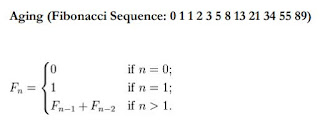Friday, August 31, 2012
Fibs in NZ -- and climate change
Tuesday, September 13, 2016
A Fib (a perfect circle) -- and some math-po links
1 Not
1 one
2 circle
3 is perfect
5 yet the idea
8 of circle's useful every day.
The beauty of images and the ideas they represent is central in both mathematics and poetry. A wonderful resource for works that join these two is the literary website TalkingWriting,com -- whose poetry editor is Carol Dorf, also a math teacher. Here is a link to a wonderful TW essay from a few years back, "Math Girl Fights Back" by Karen J Ohlson. This article by Dorf, "Why Poets Sometimes think in Numbers," introduces a 2012 collection of mathy poems. Another collection was posted in the Spring 2016 issue. In addition, at the TalkingWriting website, you can enter the search term "math" -- as I did -- and be offered 5 pages of links to consider.
Thursday, May 5, 2022
Build a Poem using a Fano Plane
Many of the mathematical poetic forms introduced in this blog are structures that can be used to build a poet's fragmented thoughts into complete and poetic form. The Fib, for example, gives a syllable structure to help a writer shape an idea. Syllable-squares are another simple structure and -- familiar also but much more complex -- the fourteen-line Sonnet in iambic pentameter.
Math Professor Dan May of South Dakota often works with an interesting and more complex structure called the Fano Plane -- a finite projective plane of order 2 -- and composed of 7 vertices with 7 connecting lines, each joining three vertices:
 |
Wednesday, July 15, 2020
A thoughtful Fibonacci poem
the irrational by Roberto Christiano
irrational
numbers
c'est moi?
a number that
cannot be expressed by the
ratio of two integers / and what's an integer?
Wednesday, October 10, 2018
Math-Poetry Contest for Maryland Students
Winners Announced: December 12, 2018
Write
a
thoughtful
poem that
shows ways math is most
amazing -- a subject we love!
Monday, November 12, 2012
Finding fault with a sphere . . .
This
Fib
poem
says THANK-YOU
to all those students
from Arcadia and Temple
who participated in "math-poetry" with me --
who held forth with sonnets, pantoums,
squares, snowballs, and Fibs --
poetry
that rests
on
math.
My Temple host, Irina Mitrea, and I share something else besides being women who love mathematics -- the Romanian poet, Nichita Stanescu (1933-83), is a favorite for both of us. My October 23 posting ("On the Life of Ptolemy") offered one of Sean Cotter's recently published translations of poems by Stanescu and below I include more Stanescu-via-Cotter -- namely, two of the ten sections of "An Argument with Euclid." These stanzas illustrate Stanescu at his best -- irreverently using mathematical terminology and expressing articulate anger at seen and unseen powers of oppression.
Wednesday, November 28, 2018
Counting words with the Fibonacci numbers . . .
none
1(one)
1(ego)
two (I)
I 2 threeeeeeeeee
5 school, ruled 2 three
Tuesday, January 16, 2018
Blog history -- title, links for previous posts . . .
Scroll through the titles below, browsing to find items of interest
among the more-than-nine-hundred postings since March 2010
OR
Click on any label -- a list is found in the right-hand column below the author profile
OR
Enter term(s) in the SEARCH box -- and find all posts containing those terms.
For example, here is a link to the results of a SEARCH using math women
And here is a link to a poem by Brian McCabe that celebrates math-woman Sophie Germain.
This link reaches a poem by Joan Cannon that laments her math-anxiety.
This poem expresses some of my own divided feelings.
Tuesday, January 3, 2017
December 2016 (and prior) -- titles, dates of posts
Dec 31 Happy New Year! -- Resolve to REWARD WOMEN!
Dec 27 Celebrate Vera Rubin -- a WOMAN of science!
Dec 26 Post-Christmas reflections from W. H. Auden
Dec 19 Numbers for Christmas . . .
Dec 15 Remembering Thomas Schelling (1921-2016)
Dec 12 When one isn't enough ... words from a Cuban poet
Tuesday, September 3, 2019
Is this Fib true?
it
true that
among folks
not anchored to math
by study or career choice, more
people show delight in being poor at math than good ?
Friday, June 3, 2022
The Mobius Strip -- in a LIMERICK
Mathematics offers brief, condensed
language for many big ideas. Even for small problems -- such as the
word problems of a beginning algebra class -- translation of the words
into a mathematical equation offers the chance to express the problem precisely
and to solve it using established procedures.
And brief mathematical forms also are popular in poetry -- the six-line Fib and the five-line rhyming stanza called a limerick both have wide appeal. And, because of the brevity, the language must be concise. At this webpage, maintained by Joachim Verhagen, are lots and lots of mathy limericks. Here is a sample:
The Moebius strip is a pain,
When you cut it again and again,
But if you should wedge
A large disk round the edge
Then you just get a PROjective plane.
This link leads to an interesting article about a Mobius strip made of light (see also the photo below); this link leads to a Wikipedia article about a real projective plane. And more of Verhagen's Mobius strip limericks may be found here.
 |
| A Mobius strip from this NOVA article |
This link leads to a website with instruction for construction and playful activities with a Mobius strip. To enjoy limericks found in earlier postings in this blog, follow this link.




